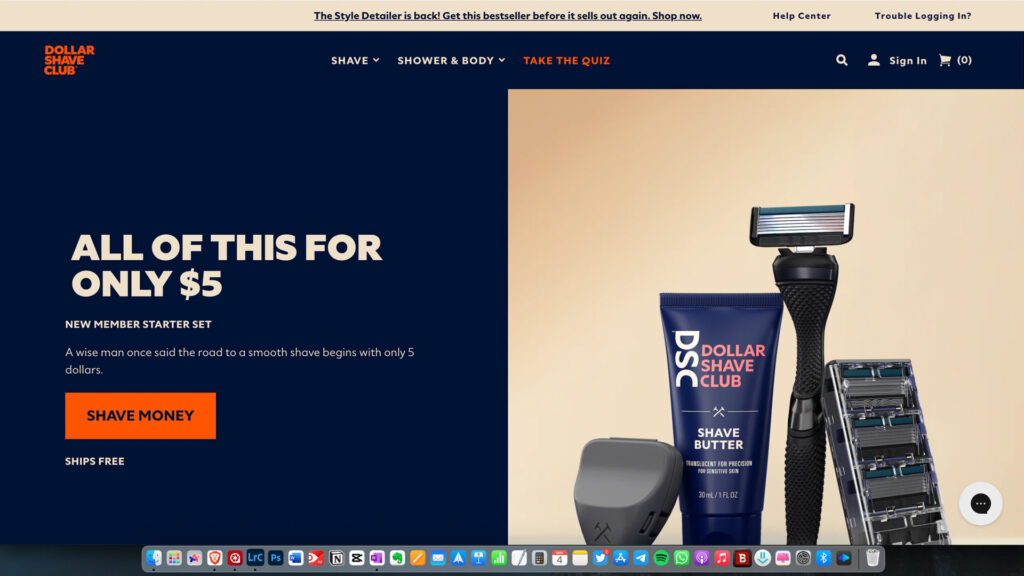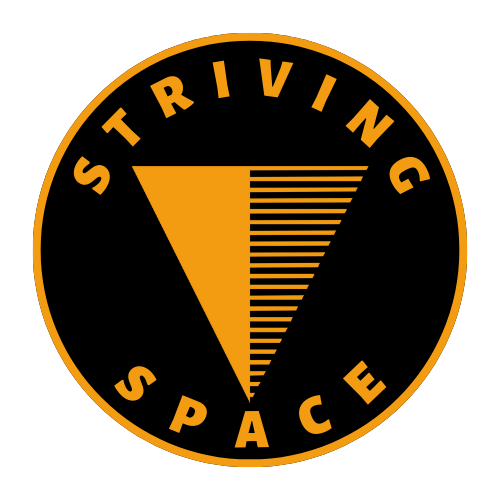
Define Your Product and Audience
Disclosure: I may earn a small commission if you buy something through my links in this content. This helps support my work, but my opinions and reviews are independent, not influenced by any affiliate partnerships.
Defining your product and audience is the first step towards building a successful single product website. This step involves several key components such as product clarity, features, benefits, and unique value proposition (UVP).
- Product clarity: Involves listing all the tangible aspects of your product such as materials, dimensions, functionalities, etc. For instance, if your product is a backpack, you would list features like size, number of compartments, water resistance, laptop sleeve, etc.
- Benefits: Go beyond the “what” and focus on the “why.” You should highlight the positive outcomes that customers will experience from using your product. Instead of saying “water-resistant,” you could emphasize how your backpack will keep belongings dry in unexpected rain.
- Unique Value Proposition (UVP): Your unique value proposition (UVP) should explain how your product stands out from the competition. This could be because it addresses an existing problem in a new way, has significantly better quality, or is offered at a different price point. Identify the core reason why buyers would choose your product over others.
Target Audience
- Demographics: The basics – age range, gender, location, income bracket, etc.
- Interests: What do they care about, enjoy doing, or follow? This gives insight into their lifestyle.
- Pain Points: What problems, frustrations, or unmet needs do they have that your product can potentially address?
- Motivations: What drives their purchasing behavior? Is it status, convenience, solving a specific problem, etc.?

Brand Identity
If you’re starting a new website, defining your brand identity is an essential step to create a website that truly represents your product and connects with your audience. Your brand identity is more than just a fancy logo and color scheme; it’s the essence of your business, including the personality, values, and emotions that you want to convey to your customers. Take the time to develop your brand identity early on to lay the groundwork for a cohesive, memorable, and effective website.
If you’ve already defined your brand identity, you can skip this step. But if you’re starting from scratch, you can start by brainstorming and answering some essential questions:
- What are the core values that my business stands for?
- What kind of personality do I want my brand to have?
- What emotions do I want my brand to evoke in customers?
- Who are my ideal customers, and what resonates with them?
You should also consider the colors, fonts, logo, and tone of voice that will represent your brand.

Choosing the Color
Color psychology is powerful, and each color can evoke different emotions. Think about your product and target audience when choosing your primary color palette.
| Color | Red | Blue | Green | Yellow |
| Emotions | Boldness, excitement, urgency | Trust, professionalism, calm | Nature, growth, freshness | Optimism, friendliness, affordability |
Typography
Typography sets the mood, and you should ensure your fonts are easily readable on different screen sizes.
- Serif fonts (e.g., Times New Roman) are traditional and classic.
- Sans-serif fonts (e.g., Arial) are modern and clean.
- Script or display fonts can add personality but should be used sparingly.

Logo and Tone of Voice
A logo is a visual symbol of your brand, and it should be memorable, simple, and scalable.
- You can use a wordmark (just your company name stylized), an icon, or a combination of the two.
- Think about how it will look on your website, packaging, etc.
Your tone of voice should reflect your target audience, and it can be formal or casual, playful or serious, luxurious or approachable, depending on your brand identity.
Mission and Values
- Mission – Your company’s purpose for existing beyond generating profits. What is the fundamental problem that your business solves for its customers?
- Values – The fundamental beliefs that guide your business decisions. What principles does your company stand for? (for example, innovation, sustainability, and social responsibility)
Business Plan and Goals
- Overall Vision: Where do you see your business in 5 or 10 years?
- Website Goals: What specific objectives do you want your website to achieve? Do you want to generate sales, increase brand awareness, educate customers, or capture leads for email marketing?
- Short-term and Long-term objectives: Break down your goals into achievable milestones with target dates.
EXAMPLE (ECO-FRIENDLY CLEANING PRODUCTS)
Colors: Greens and blues for a natural feel.
Fonts: Clean sans-serif for modernity, maybe a playful script for a touch of personality
Logo: A simple leaf icon
Tone of voice: Friendly, educational, and passionate about sustainability
Mission: To make it easy for everyone to choose non-toxic cleaning
Values: Health-conscious, environmentally responsible
Why do these steps matter? The more you understand your product, target audience, and brand, the better your decisions will be in the future. With a deeper understanding, you will be able to design a website that resonates with your ideal customer, write compelling copy that highlights what matters most to them, and market strategically to find them on the right channels using messaging that hooks them.

Choose a Platform
When setting up a single product website, choosing the right website platform is important. There are a few things you should consider when making your choice:
Ease of Use: How comfortable are you with technology? If you’re a beginner, platforms like Shopify, Squarespace, and Wix prioritize drag-and-drop interfaces and templates for easy setup. If you’re more experienced, WordPress (especially with WooCommerce) offers more customization, but might have a steeper learning curve.
Customization: How much control do you need over design and functionality? If you’re looking for pre-made templates that you can customize, Shopify, Squarespace, and Wix offer many options. On the other hand, if you want complete control and are comfortable with coding or hiring a developer, WordPress is a great choice.
There are many ready-to-use templates available for purchase that are specifically designed for businesses. You can find an example here: 2024’S BEST WORDPRESS THEMES FOR SMALL BUSINESSES
Ecommerce Features: Ensure the platform has everything you need for a smooth online store, including secure payment processing (with integration with popular providers like Stripe or PayPal), flexible shipping options and calculations, inventory management tools, and sales tax handling (dependent on your location and regulations).
Domain Name: Your website’s address is important. Check if your desired name is available (Namecheap or other platforms can help with this) and choose a name that is short, easy to spell, and ideally related to your product or brand.
Reliable Hosting: The server where your website’s files live impacts speed and uptime. Many platforms (like Shopify, Squarespace, and Wix) include hosting, simplifying things. With WordPress, you’ll need to choose your own hosting provider separately. This gives you more control and flexibility, but requires some technical knowledge to set up and manage. Consider factors like uptime, storage space, bandwidth, security measures, and customer support when choosing a hosting provider.
My personal recommended hosting service for WordPress site.

Popular Platforms – Quick Overview:
- Shopify: Great for pure ecommerce stores, easy to use, strong features.
- Squarespace: Elegant templates, good for visually focused products.
- Wix: Lots of design flexibility, wide range of features.
- WordPress (with WooCommerce): Most customizable, but potentially more complex to learn.
Don’t Rush This Decision:
- Test out free trials: Explore the platforms before committing.
- Price Comparison: Factor in monthly fees and any transaction costs.
- Scalability: If you plan to expand your product line in the future, ensure the platform can grow with you.

Structure Your Single Product Website
How to structure your single product website for maximum impact:
Homepage
- Hero Image: This is your first impression! Choose a visually stunning, high-quality photo or video that puts your product front and center. Consider showing it in use to illustrate its benefits.
- Clear Headline: A few well-crafted words summarizing your unique value proposition. What’s the core problem you solve for customers? Keep it concise and aligned with your brand voice.
- Strong Call to Action (CTA): Guide visitors towards their next step. “Buy Now,” “Learn More,” or “Shop Now” are common choices. Make the button bold and easy to find.
- Subheading (Optional): Add a short line beneath the headline to provide further context or highlight a key benefit.

Product Page
- Detailed Product Information: Be thorough! Include:
- Specifications (size, materials, etc.)
- Detailed descriptions using sensory language (sight, touch, potential sounds, etc.)
- How to use it and care for it (if relevant)
- High-quality visuals:
- Multiple images from different angles
- Zoom-in functionality for close-ups
- Lifestyle photos showing the product in use
- 360-degree views or videos are a big plus if possible
- Customer Reviews and Testimonials: Social proof is huge for building trust in a new product.
- Clear Pricing: No surprises! Include shipping costs or clearly link to a shipping information page.
- FAQs:
- Anticipate common questions and provide answers upfront. This reduces purchase hesitation and the need for customer support inquiries.
- Consider an accordion-style FAQ section to save space on the page.
- Strong CTA – Repeated: Don’t assume the visitor will scroll all the way down. Place another clear “Buy Now” (or similar) button near the bottom of the page.
About Us
- Your Brand Story: Share your ‘why’! Craft a narrative that highlights your mission and values. How did you come to create this product?
- Trust Building Elements:
- Emphasize your commitment to quality, customer service, or other priorities.
- Include founder photos or a quick “meet the team” section for a personal touch.
Contact
- Easy to Find: Include a “Contact” link in your main navigation.
- Multiple Methods: Offer an email form and a phone number if possible.
- Prompt Response: Mention average response times to manage customer expectations.
Additional Tips
- Keep it uncluttered: Too many elements overwhelm visitors. Let your product shine!
- Social Media Links: Include these on relevant pages, preferably without taking users away from your site.
- Clear Navigation: Make it simple for visitors to find what they need. Consider a minimalist design with only a few main categories.

Design for Impact
Designing a visually impactful and compelling single product website requires attention to detail. Here are some tips to achieve a clean and uncluttered look that guides the visitor’s eye to what’s important:
Visual Appeal
- White Space: Use ample white space around elements to create a sense of openness and avoid clutter.
- Color Scheme: Reflect your brand identity by using the colors you’ve carefully chosen to represent your product. Use them strategically for backgrounds, buttons, and accents.
- Fonts: Stick to 2-3 fonts across your website for consistency. Choose fonts that align with your brand voice and ensure they’re easy to read on all screen sizes.
- Visual Hierarchy: Guide the visitor’s eye through the most important information. Use variations in size, color, and placement of text and images to signal what to look at first, second, etc.
High-Quality Images

High-quality images can make a significant difference in how your products are perceived by potential customers. While hiring a professional photographer might be expensive, it can be worth the investment. Skilled photographers can show your product’s best features through lighting and composition, which can help increase sales.
If you’re taking photos yourself, there are a few things to keep in mind. Lighting is the key to creating good images, so try to use natural light as much as possible. Avoid harsh shadows or overly yellow artificial light. The background of your images is also important. A plain white background is a classic choice that works well for most products. However, if you want to use a textured backdrop, make sure it fits your brand aesthetic.
Don’t forget to make sure your images are clear and crisp, and offer zoom capabilities on your website if possible. This will allow customers to see your products in detail and make informed purchase decisions.
Compelling Copy for Your Single Product Website
Compelling copy is important for effective marketing, a compelling copy should:
- Benefits-Focused: Tell the customer how the product will improve their life, solve their problem, or make them feel, instead of simply listing features.
- Reflect brand voice: Be consistent with your brand’s tone and language. If your brand is playful, your copy should be too. If it’s luxury-focused, your language should be sophisticated.
- Use powerful headlines: Grab attention with headlines that use verbs and highlight the key benefit for your target audience.
- Be scannable: Break up paragraphs with short sentences and subheadings. Use bullet points when listing features or benefits. People skim websites, so make it easy for them to quickly get the crucial info.
Easy Navigation
- Intuitive: Visitors shouldn’t have to think about how to get around your site.
- Minimalist Menu: Stick to a few essential categories: “Home,” “Shop” (or the product name), “About Us,” “Contact”. You can use submenus if strictly necessary.
- Search Bar: Especially helpful if you plan to expand your product line in the future. Let people easily search for what they need.
- Footer Navigation: Repeat important links here (Contact, FAQs, shipping info, etc.) for visitors who scroll to the bottom.
Additional Tip:
- Mobile Optimization: Design with smaller screens in mind. Buttons should be large enough to tap with a finger, text needs to be readable, and the site should load quickly on mobile data.

Optimize for Conversions
Driving conversions on a single product website requires effective techniques. Let’s discuss how to achieve this goal.
Strong Calls to Action (CTAs)
- Prominence: Ensure your CTA buttons stand out. Use contrasting colors, larger fonts, and place them strategically throughout the site (homepage, product page, etc.).
- Action Verbs: Use direct language like “Buy Now,” “Add to Cart,” “Shop the Collection,” or “Claim Your Offer.” Avoid vague phrases like “Click Here”.
- Repetition: Don’t make users hunt for the next step. Have CTAs easily accessible at multiple points on your product pages.
Urgency and Scarcity
- Limited-Time Offers: Set a deadline for a special discount or promotion. Create a sense of FOMO (fear of missing out) to get visitors to act instead of waiting.
- Stock Levels: If you have limited inventory, display how many items remain. This taps into the psychological desire for things that are scarce. Be honest though – don’t create false scarcity!
- Visual Cues: Utilize countdown timers, strikethroughs on original prices, and words like “Almost Gone” to reinforce the urgency of purchase.
Trust Signals
- Security Badges: Partner with trusted payment systems (like PayPal, Stripe, etc.) and prominently display their logos on your checkout page.
- Testimonials and Reviews: Highlight positive feedback from previous customers, ideally with names and photos for authenticity. Place these on your product pages AND your homepage.
- Guarantees: Offer a satisfaction guarantee, money-back policy, or free returns to reduce risk perception for first-time buyers.
- Press Mentions: If you’ve been featured in any publications or blogs, showcase those logos on your site. This boosts your credibility.
Additional Tips
- Exit-Intent Popups: A last-ditch effort to capture visitors leaving your site. Offer a discount or incentive in exchange for their email address. Use sparingly to avoid being annoying!
- Live Chat: Provides real-time support to answer questions and remove purchase barriers.
- Cart Abandonment Recovery: Send automated emails to customers who add a product to their cart but don’t complete the purchase.
Important Note: Don’t overload your page with too many urgency or scarcity tactics. Overwhelm can make you seem untrustworthy. Choose a few of these that align with your brand.

Marketing and Promotion
Let’s discuss some effective marketing and promotion strategies to get your single product website in front of the right audience. We’ll start with SEO (Search Engine Optimization).
SEO (Search Engine Optimization)
- Keyword Research: Identify the terms people search for when looking for products similar to yours. You can use tools like Google Keyword Planner, Semrush, or Ahrefs to help you with this.
- On-Page Optimization: Make sure to use keywords naturally in the following places:
- Page titles and meta descriptions (the text displayed in search results)
- Product descriptions and image alt text
- Headings throughout your website content
- Technical SEO: Your website’s loading speed, mobile-friendliness and clear structure impact how search engines crawl and rank your website. So, ensure that your site is optimized for these factors.
Social Media to Promote Single Product Website
Social media can be a powerful tool for businesses to connect with their target audience. However, it’s better to choose the right platforms where your audience is most active. Rather than trying to be everywhere at once, it’s best to focus on 2-3 major platforms to start.
When it comes to visuals, high-quality product photos and videos can make a huge difference on platforms like Instagram or Pinterest. Additionally, running paid ads can be highly effective as social media ads offer precise audience targeting based on age, interests, location, and more. It’s wise to start with small budgets to test what works before significantly scaling up your ad spending.
Engaging with your followers is also important. Responding to comments, running contests or polls, and partnering with influencers in your niche can help expand your reach. Maintain a consistent branding across all platforms. Your visuals, tone of voice, and messaging should align with your website to create a cohesive brand image.
Content Marketing
- Blog Posts: Write articles offering valuable information to your target audience. Examples: How-to guides relating to your product, addressing common problems your product solves, product comparisons, and trend articles within your niche.
- Videos: Tutorials, product demos, or behind-the-scenes content do well on video platforms like YouTube or TikTok.
- Optimize for Search: Use relevant keywords within your content to attract organic traffic.
- Promote on Social Media: Share your content across your social channels to drive traffic back to your website.
Email Marketing
- Build Your List: Offer signup incentives (a discount, free resource, etc.) in exchange for email addresses. Place forms on your website and via popups.
- Nurture Leads: Send regular newsletters, promotional offers, and valuable content. Segment your list (e.g., new customers vs. repeat buyers) to send more personalized messaging.
- Automate: Use email marketing software (like Mailchimp, Klaviyo, etc.) to setup automated welcome series, abandoned cart reminder messages, and more.
Important Note: Marketing is about consistency! Choose strategies that you can sustain and see through for the long term.

Successful Single Product Website Examples
Sometimes, the best way to understand the principles in action is to see them applied. Let’s analyze a few successful single product websites (or websites with a strong focus on a primary product) and break down what makes them work:

- Strong Hero: Humorous video immediately grabs attention, then a clear headline + subheading explain the value proposition (quality razors, delivered affordably).
- Benefits, Not Features: Focuses on convenience, cost-savings, and a hassle-free experience.
- Social Proof: Testimonials and “featured in” logos build trust early on.

- Appeals to Desire: Beautiful visuals and copy that highlights discovery and the ‘treat yourself’ aspect of beauty boxes.
- Clear Target Audience: Design and messaging are clearly geared towards women interested in skincare and makeup.
- Easy Navigation: Simple menu focuses on helping you explore boxes and shop products if desired.

- Unique Value Proposition: Emphasizes the product’s difference (socks with hidden storage) right in the hero image and headline.
- Compelling Visuals: Product videos and photos showing the socks in use.
- Addresses Objections: A dedicated section answers common questions head-on.
- Benefits-Focused: Headline and copy focus on better sleep and stress reduction.
- Science as Trust Signal: Citing research and explaining the weighted blanket concept builds credibility.
- Clean Design: Uncluttered, focuses attention on the product.

- Visually Focused: Large product photos and a grid-style layout let the shoe variations shine.
- Reviews on Product Page: Social proof directly where people are considering a purchase.
- Multiple CTAs: “Shop Now” buttons are repeated throughout the product page.

- Tech-Forward Design: Aligns with Apple’s overall brand aesthetic – sleek and minimalist.
- Explainer Video: Quickly demonstrates the product’s features and use cases for those less familiar.
- Trust Signals: The Apple logo itself is a powerful trust signal, but they also emphasize data privacy.

- Focus on Ecosystem: While they sell many products, this section highlights how their smart home devices work together.
- Excellent Product Photography: Clean, bright images showcase devices in lifestyle settings.
- Benefits for Each Device: The page has mini-sections with a photo, headline about the product’s core benefit, and a “Learn More” CTA.
Key Takeaways
- Strong, Clear Value Proposition: Each site quickly informs the visitor what they offer and why it matters.
- Target Audience Understanding: Design, tone, and messaging all feel tailored to a specific type of customer.
- Great Visuals: Photos and/or videos are used effectively to both showcase the product and support the brand image.

Analyzing Competitor Websites
Studying successful single product websites is helpful, but understanding your direct competitors is essential. Here’s how to analyze their sites strategically:
- Identify Competitors:
- Direct: Who sells the same or very similar products to your target audience?
- Indirect: Who offers solutions that address the same problem as you but with a different kind of product?
- Look at These Key Elements:
- Branding: What colors, fonts, and tone of voice do they use? How does it compare to your own emerging brand?
- Value Proposition: How do they explain their product’s benefits? Is their USP similar or different from yours?
- Site Structure: How is their website organized? Pay attention to navigation, product page layout, and any additional content (blogs, etc.)
- Visuals: Do they use photography, videos, or a more illustrative style?
- Calls to Action: What actions do they encourage visitors to take? Where are their CTAs placed?
- Dig Deeper:
- Pricing: How does their pricing strategy compare to yours?
- Social Media: What platforms are they on? How does their social presence differ from your plan?
- Reviews: What are customers saying about them (positive and negative)? Look on their site and external review platforms.
- Ask Yourself:
- Strengths: What do they do REALLY well? What can you learn from them?
- Weaknesses: Where do you see opportunities to stand out?
- Differentiation: How will you ensure your product and website offer something unique compared to them?
Tip: Create a simple spreadsheet or document to track your findings. This helps you compare competitors and uncover patterns. Don’t get bogged down trying to copy everything a competitor does. Use their site as inspiration and find ways to make yours even better!

Final Thoughts
To build a successful single product website, you need to have a strategy and pay attention to details. Although it may seem daunting, this guide has broken down the process into manageable steps. By defining your product, understanding your target audience, and developing a brand that resonates with them, you set yourself up for success. Investing time in these early stages pays huge dividends when you reach the stage of designing your site and crafting compelling marketing messages.
Remember, your website is a living reflection of your business. Choose a platform that aligns with your technical skills and consider how you might need it to grow in the future. Let your brand identity shine through in your website’s design, ensuring every visual element, every word of copy, and every navigation choice feels consistent. By optimizing for conversions and getting your website in front of the right people through SEO, marketing, and content, you’re well on your way to turning website visitors into loyal customers. The journey doesn’t end at launch – continue to monitor your site’s performance, gather feedback, and refine your approach over time!












